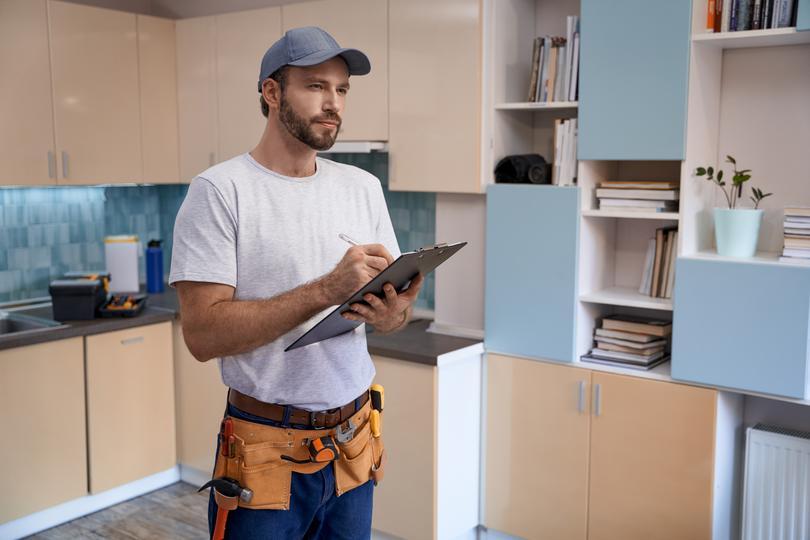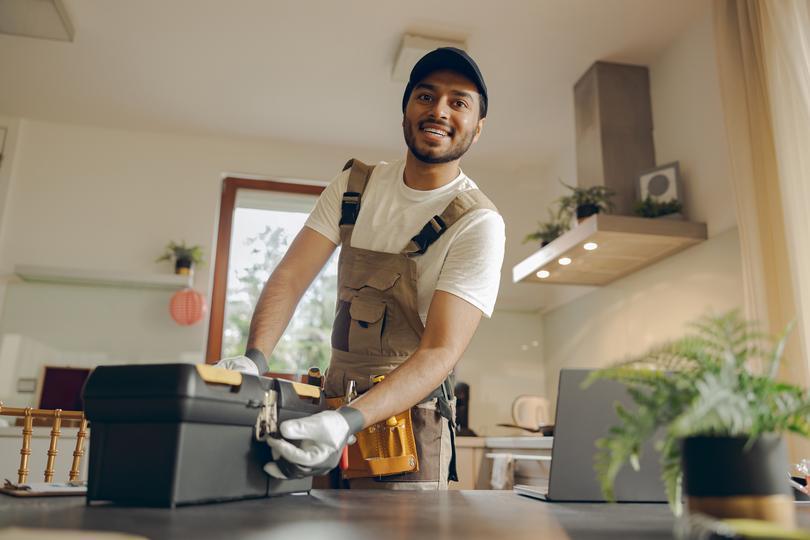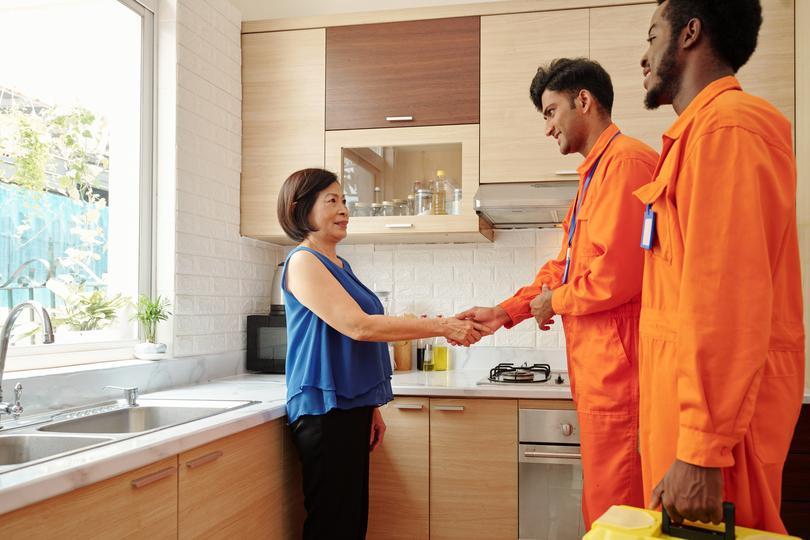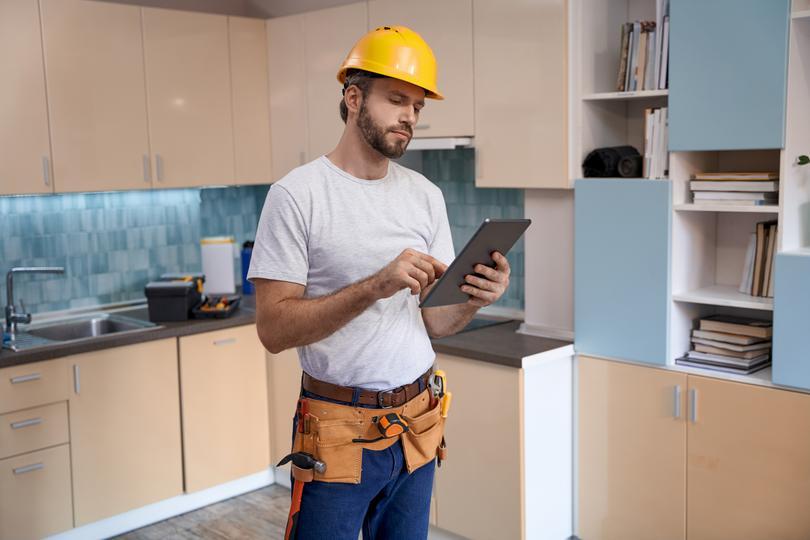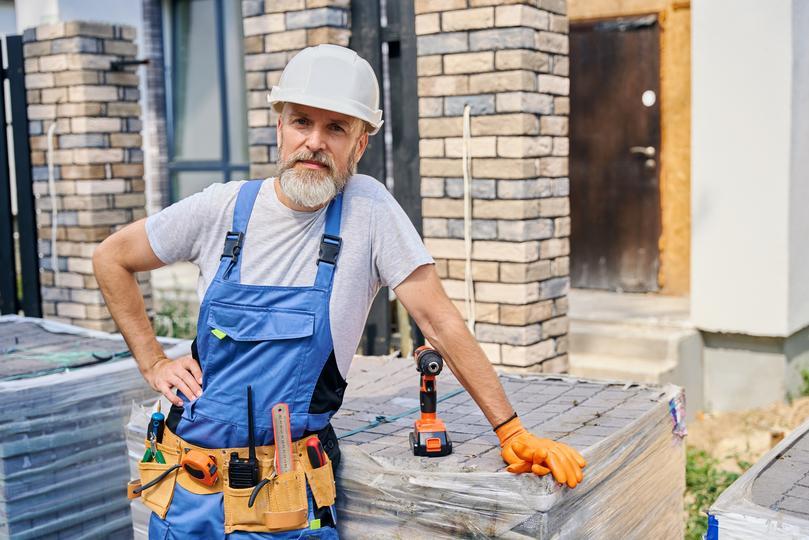Unlock Handicap Renovation Services - Ensure Accessible Spaces
Empower Your Independence with Professional Remodeling
From bathrooms to entire homes, secure free, no-obligation quotes for handicap remodeling. Ensure your space is accessible and comfortable for everyone.

Start Your Accessibility Transformation
Use our platform to compare and connect with experts in handicap remodeling. Achieve a safer, more accessible living environment today.
Find top-tier remodeling companies to enhance your living space. Explore services for whole home, kitchen, bathroom renovations, and more with expert craftsmansh
Transform your kitchen into a masterpiece with top-rated remodeling companies. Discover custom designs, luxury finishes, and smart kitchen solutions.
Upgrade your bathroom with the best in the business. Explore spa-like renovations, eco-friendly fixtures, and modern design solutions.
Expand your living space with premium home addition services. From extra bedrooms to sunrooms, get custom solutions tailored to your needs.
Transform your entire home with our comprehensive renovation services. From design to execution, experience seamless integration of style and functionality.
Elevate your home’s curb appeal with our exterior remodeling services. From siding and windows to roofing, create a lasting first impression.
Create your perfect outdoor living space with our deck and patio construction services. Tailored designs meet exceptional craftsmanship.
Maximize your home’s potential with our basement finishing and remodeling services. Turn unused space into your new favorite place.
Embrace sustainability with our energy-efficient remodeling services. From solar panels to green materials, enhance your home’s efficiency and comfort.
Upgrade your living with smart home automation. Control lighting, security, and entertainment systems seamlessly for enhanced comfort and convenience.
Ensure your home meets your needs at any age with our aging-in-place modifications. From grab bars to walk-in tubs, prioritize safety and accessibility.
Add a personal touch to your home with custom carpentry and built-ins. From bookshelves to closets, get bespoke solutions that fit your style and needs.
Elevate your home with our flooring installation services. Choose from high-end hardwood, marble, or custom tiles to create a stunning foundation for your space.
Preserve the past and embrace the future with our historic home renovation services. Specializing in revitalizing heritage homes with a touch of modern convenien
Enhance your outdoor living space with our professional hardscaping services. From patios to walkways, our expert team creates beautiful, durable outdoor areas.
Ensure your home is safe and secure with our high-tech security systems installation services. From advanced surveillance to smart locks, enjoy peace of mind wit
Enhance your home’s energy efficiency and aesthetic appeal with our window and door replacement services. Choose from a wide range of stylish and durable options
Illuminate your home with custom lighting solutions that blend functionality and design. From LED upgrades to automated lighting systems, light up your space you
Create the ultimate entertainment space with our home theater installation services. Experience cinema-quality sound and visuals in the comfort of your home.
Enhance your outdoor living spaces with our outdoor lighting and electrical system services. From garden lights to integrated outdoor entertainment systems, make
Transform your outdoor space into a serene oasis with our custom water feature installations. From fountains to koi ponds, add a touch of tranquility to your hom
Achieve the perfect indoor environment with our advanced climate control systems. Enjoy tailored temperature and humidity settings for ultimate comfort all year
Enhance your home’s energy efficiency with our eco-friendly insulation solutions. From spray foam to sustainable materials, reduce your carbon footprint while sa
Ensure your home is protected with our roof replacement and repair services. From leak repairs to complete roof overhauls, our experts deliver quality workmanshi
Maximize your home’s potential by transforming your attic into a functional living space. Whether it’s a new bedroom, office, or playroom, our attic remodeling s
Create the ultimate outdoor living experience with our custom design and construction services. From kitchens to fire pits, enjoy your outdoor space to the fulle
Create a productive and stylish home office space with our remodeling services. From ergonomic designs to custom storage, work from home in comfort and style.
Add value and functionality to your home with a custom pool house. Perfect for entertaining, changing, or simply relaxing by the poolside.
Transform your garage into more than just a place for parking. Our garage remodeling services can turn it into a workshop, gym, or additional living space, tailo
How it works?
Our process guarrantees that you always get afair and competitive quote. Say goodbye to overbilling!

- Submit an Enquiry Describing Your Project
- Begin by submitting an enquiry for your Handicap Remodeling needs on Remodelyng.co.uk, ensuring that all relevant project specifics are covered to match you accurately with skilled contractors.
- Experts Match You With Qualified Contractors
- Our Remodelyng.co.uk specialists will assess your project details and then invite the most skilled contractors, who have a proven track record of success on Handicap Remodeling projects, to submit a competitive quote for your consideration.
- Contractors Offer Their Best Quotes
- Selected companies, aware of the competition and keen to win your job, will put forward fair and competitive quotes, ensuring you get the best value for your Handicap Remodeling project.
- Review, Compare, and Choose
- You'll receive these offers along with access to the contractors' profiles, including reviews, insurance details, and license information. This comprehensive data allows you to make an informed decision, picking the contractor that best fits your project's requirements and budget, based on factual evidence rather than intuition.
Why Choose Remodelyng.co.uk?
At Remodelyng.co.uk, we're committed to making your Handicap Remodeling journey seamless and rsik-free. From the first click to the completion of your project, our team is here to support you every step of the way.

- No Cost, No Obligation
- Submitting a project request on Remodelyng.co.uk is absolutely free, and you're under no obligation to proceed. We understand the importance of exploring your options before making a decision.
- Multiple Quotes
- Receive up to 3 competitive quotes from our network of vetted companies. We make it easy for you to compare options and ensure you're getting the best deal for your project.
- Best Price Guarantee
- Our platform is designed to help you always find the best price for essential home improvements. With a wide range of contractors, you're sure to get a great deal for high-quality work.
- Quality and Trust
- Choose from a selection of top-rated professionals vetted for quality and reliability. Our rigorous selection process ensures that you're matched with the best contractors who have a proven track record of success.
- Comprehensive Services
- From initial consultation to the final touches, Remodelyng.co.uk offers a wide range of services to cover all aspects of your remodeling project. Whether it's a kitchen upgrade, bathroom renovation, or a full home remodel, we have the expertise to support your vision.
- Instant Booking & Convenience
- With Remodelyng.co.uk, you can book your project instantly online. No more waiting for callbacks or dealing with multiple contractors. Our streamlined process saves you time and hassle, making home improvement projects as straightforward as possible.
Handicap Renovation Comprehensive Checklists
Explore our comprehensive checklists to assist you through every phase of your handicap renovation project, ensuring comfort for everyone.
Step 1
Planning Your Handicap Remodel
How Do I Start Planning My Handicap Remodel?
Initiating your handicap remodel involves meticulous planning and understanding specific needs. Follow these steps for a successful project.
- Assessing Needs
- Conduct a detailed assessment of the individual's needs to ensure the remodel addresses all mobility concerns.
- Setting a Budget
- Establish a realistic budget that includes potential grants available for handicap remodeling projects.
- Researching Regulations
- Familiarize yourself with ADA (Americans with Disabilities Act) guidelines and local building codes to ensure compliance.
- Design Inspiration
- Look for design inspiration that combines functionality with aesthetics to create a welcoming space.
- Hiring an Expert
- Consider hiring a designer with experience in handicap remodeling to guide the project.
- Choosing Materials
- Select non-slip materials and fixtures designed for ease of use in bathrooms.
- Technology Integration
- Explore assistive devices that can enhance safety for individuals with disabilities.
- Permit Acquisition
- Apply for any necessary permits early in the process to avoid delays, making sure your plans comply with all regulations.
- Creating a Timeline
- Develop a project timeline that includes lead times for materials.
- Establishing Communication
- Set up clear communication channels with your contractor and design team to keep informed and make decisions efficiently.
Step 2
Selecting the Right Contractor for Handicap Remodeling
How Do I Choose the Best Contractor for My Handicap Remodel?
Choosing a contractor experienced in handicap remodeling is crucial. Here are steps to find a professional who understands your vision and requirements.
- Seeking Specialized Contractors
- Look for contractors with specific experience in handicap remodeling, checking for certifications.
- Verifying Credentials
- Ensure potential contractors have all necessary insurances, particularly those related to accessibility remodeling.
- Evaluating Past Work
- Review the contractor's past projects to assess their expertise in making spaces functional for all users.
- Checking References
- Contact previous clients to inquire about their experience and satisfaction with the contractor's work on accessibility projects.
- Comparing Quotes
- Obtain and compare detailed quotes from several contractors, ensuring they cover all aspects of your project.
- Discussing Accessibility Features
- Have in-depth discussions about the specific accessibility features you need, ensuring the contractor is comfortable and experienced in installing them.
- Understanding the Contract
- Review the contract in detail, paying close attention to the scope of work, project timeline, payment schedule, and warranty for accessibility features.
- Scheduling
- Confirm the contractor's availability aligns with your timeline, considering the urgency and necessity of the remodeling for daily living.
- Accessibility Compliance
- Ensure the contractor is knowledgeable about ADA compliance and other relevant standards for your remodeling project.
- Finalizing Your Choice
- Once you've found a contractor who meets all your criteria, proceed with finalizing the agreement to start your project.
Step 3
Preparation Before Handicap Renovation Begins
What Do I Need to Prepare Before Starting Construction?
Preparation is key to a smooth remodeling process. Here’s a checklist to ensure you’re ready for construction to begin.
- Finalizing Design Plans
- Ensure all design plans are finalized, focusing on accessibility and ease of use, and approved by any relevant authorities.
- Clearing the Space
- Prepare the renovation area by removing obstacles and securing valuables, ensuring a safe and efficient workspace.
- Securing Pets and Children
- Make arrangements for pets and children to ensure their safety and minimize stress during the construction phase.
- Setting Up a Temporary Living Space
- If necessary, set up a temporary living space that accommodates the individual’s needs during the remodel.
- Notifying Neighbors
- Inform your neighbors about the upcoming project, especially if you expect noise or any disruptions.
- Material Delivery Arrangements
- Coordinate the delivery of materials so they arrive in a timely manner, avoiding delays in the project timeline.
- Safety Measures
- Discuss safety protocols with your contractor, ensuring all workers are informed about accessibility needs and precautions.
- Access Routes
- Plan and communicate clear access routes for contractors, especially if alternative entrances or pathways are needed for the duration of the project.
- Utility Adjustments
- Make any necessary adjustments to utilities ahead of time to prevent disruptions during the remodeling process.
- Emergency Plans
- Establish a plan for emergencies, including how to quickly cease work and vacate the premises if needed.
Step 4
Concluding Your Handicap Renovation Project
How Do I Finalize My Handicap Renovation Project?
Finalizing your remodel involves a few critical steps to ensure the space is safe, accessible, and meets all your needs.
- Final Walkthrough
- Conduct a final walkthrough with your contractor to ensure all work meets the required standards of accessibility and craftsmanship.
- Addressing Any Issues
- Identify and address any issues or adjustments that need to be made to ensure the space is completely accessible and meets your needs.
- Gathering Documentation
- Collect all necessary documentation, including warranties, manuals for installed equipment, and any relevant certificates of compliance.
- Reviewing Maintenance Procedures
- Learn about the maintenance and care of new installations and materials to ensure their longevity and performance.
- Updating Home Insurance
- Review and possibly update your home insurance policy to reflect the changes and improvements made to your property.
- Final Payments
- Complete any final payments to your contractor once all work is satisfactorily completed and all issues are resolved.
- Leaving a Review
- Consider leaving a review for your contractor to help others who are looking to undertake similar accessibility projects.
- Celebrating Your New Space
- Acknowledge the completion of your project and the enhanced accessibility of your space with a small celebration or gathering.
- Ongoing Assessment
- Periodically assess the functionality and accessibility of the remodeled space to identify any needs for further adjustments.
- Continued Learning
- Stay informed about new technologies, products, and strategies that could further enhance the accessibility and usability of your space.
Handicap Remodeling Gallery
Need Some Inspiration?
Our team has curated a collection of stylish and sophisticated Handicap Remodeling designs to assist you in finding the perfect fit for your taste.
How much does Handicap Remodeling costs?
More than a marketplace
We Are Your Closest Ally
Our hand-picked 5-stars contractors are absolutely determined to make a Handicap Remodeling project succeed. Our only question, will it be yours?
Top services from top contractors
More Remodeling Services
Remodelyng.co.uk exists to connect you to the right remodeling pro, first time and every time, whatever the remodeling project.
Transform your kitchen into a masterpiece with top-rated remodeling companies. Discover custom designs, luxury finishes, and smart kitchen solutions.
Upgrade your bathroom with the best in the business. Explore spa-like renovations, eco-friendly fixtures, and modern design solutions.
Expand your living space with premium home addition services. From extra bedrooms to sunrooms, get custom solutions tailored to your needs.
Transform your entire home with our comprehensive renovation services. From design to execution, experience seamless integration of style and functionality.
Elevate your home’s curb appeal with our exterior remodeling services. From siding and windows to roofing, create a lasting first impression.
Create your perfect outdoor living space with our deck and patio construction services. Tailored designs meet exceptional craftsmanship.
Maximize your home’s potential with our basement finishing and remodeling services. Turn unused space into your new favorite place.
Embrace sustainability with our energy-efficient remodeling services. From solar panels to green materials, enhance your home’s efficiency and comfort.
Upgrade your living with smart home automation. Control lighting, security, and entertainment systems seamlessly for enhanced comfort and convenience.
Ensure your home meets your needs at any age with our aging-in-place modifications. From grab bars to walk-in tubs, prioritize safety and accessibility.
Add a personal touch to your home with custom carpentry and built-ins. From bookshelves to closets, get bespoke solutions that fit your style and needs.
Elevate your home with our flooring installation services. Choose from high-end hardwood, marble, or custom tiles to create a stunning foundation for your space.
Preserve the past and embrace the future with our historic home renovation services. Specializing in revitalizing heritage homes with a touch of modern convenien
Enhance your outdoor living space with our professional hardscaping services. From patios to walkways, our expert team creates beautiful, durable outdoor areas.
Ensure your home is safe and secure with our high-tech security systems installation services. From advanced surveillance to smart locks, enjoy peace of mind wit
Enhance your home’s energy efficiency and aesthetic appeal with our window and door replacement services. Choose from a wide range of stylish and durable options
Illuminate your home with custom lighting solutions that blend functionality and design. From LED upgrades to automated lighting systems, light up your space you
Create the ultimate entertainment space with our home theater installation services. Experience cinema-quality sound and visuals in the comfort of your home.
Enhance your outdoor living spaces with our outdoor lighting and electrical system services. From garden lights to integrated outdoor entertainment systems, make
Transform your outdoor space into a serene oasis with our custom water feature installations. From fountains to koi ponds, add a touch of tranquility to your hom
Achieve the perfect indoor environment with our advanced climate control systems. Enjoy tailored temperature and humidity settings for ultimate comfort all year
Enhance your home’s energy efficiency with our eco-friendly insulation solutions. From spray foam to sustainable materials, reduce your carbon footprint while sa
Ensure your home is protected with our roof replacement and repair services. From leak repairs to complete roof overhauls, our experts deliver quality workmanshi
Maximize your home’s potential by transforming your attic into a functional living space. Whether it’s a new bedroom, office, or playroom, our attic remodeling s
Create the ultimate outdoor living experience with our custom design and construction services. From kitchens to fire pits, enjoy your outdoor space to the fulle
Create a productive and stylish home office space with our remodeling services. From ergonomic designs to custom storage, work from home in comfort and style.
Add value and functionality to your home with a custom pool house. Perfect for entertaining, changing, or simply relaxing by the poolside.
Transform your garage into more than just a place for parking. Our garage remodeling services can turn it into a workshop, gym, or additional living space, tailo
Looking for a reliable Handicap Remodeling contractor?
Get your project done right the first time!
No Handicap Remodeling job is too big or too small.
We will send you up to 3 fair and competitive quotes!
Have more questions? We can help.
Reach out to our team by sending us an email and we’ll get back to you ASAP.
What is handicap remodeling?
Handicap remodeling, also known as accessibility or aging-in-place remodeling, involves adapting homes to improve safety, ease of use, and independence for individuals with disabilities or mobility limitations. This could include:
- Widening Doorways: For wheelchair or walker access throughout the home.
- Installing Ramps: Providing entryway access and transitions between levels.
- Bathroom Modifications: Roll-in showers, grab bars, raised toilets, and accessible vanities.
- Kitchen Updates: Lowered countertops, accessible cabinetry, and adaptable appliances.
- Smart Home Technology: Voice control systems, automated lighting, and security for added convenience.
What are the benefits of handicap remodeling?
Handicap remodeling offers a wide array of benefits for homeowners and their loved ones:
- Safety & Independence: Reduces fall risks and enables individuals to move freely and perform daily tasks unassisted.
- Aging-in-Place: Allows seniors to remain in their homes longer, avoiding the need for assisted living facilities.
- Comfort & Dignity: Provides privacy and restores the ability to use essential spaces like bathrooms and kitchens with ease.
- Improved Quality of Life: Boosts confidence and independence, promoting overall well-being.
- Increased Home Value: Accessibility features are attractive to a broader range of potential buyers.
How do I know if I need handicap remodeling?
Consider handicap remodeling if you or a loved one face challenges such as:
- Difficulty using stairs, accessing entryways, or navigating tight spaces within the home.
- Limited mobility: Reliance on wheelchairs, walkers, or other mobility aids for getting around.
- Balance or Stability Issues: Increased risk of falls, creating a safety hazard.
- Decreased Strength or Range of Motion: Difficulty with everyday tasks like getting in and out of the shower or using the kitchen.
- Progressive Conditions: Planning for future accessibility needs due to degenerative diseases or aging.
What are some common handicap bathroom modifications?
Transforming a bathroom for optimal accessibility often includes these modifications:
- Curbless/Roll-In Shower: Zero-threshold showers for wheelchair accessibility, often with bench seating.
- Grab Bars: Strategically placed grab bars for support and stability around the shower, toilet, and bathtub.
- Raised Toilet: Increases height for easier transfers and less strain when sitting or standing.
- Handheld Showerhead: Flexible hose and adjustable height for seated showering.
- Walk-in Tub: Option for those unable to step over high tub thresholds, often with safety features like grab bars.
- Accessible Vanity: Lowered countertops and knee spaces for wheelchair users.
How much does handicap remodeling cost?
Handicap remodeling costs vary significantly depending on several factors:
- Scope of Project: The extent of modifications, ranging from minor adjustments to complete room overhauls.
- Type of Modifications: Simple additions like grab bars are generally less expensive than major bathroom renovations.
- Materials & Finishes: Premium fixtures, specialized equipment, and custom designs will increase the cost.
- Contractor & Labor Rates: Prices vary by location and the contractor's specialization.
- Permits & Inspections: May be required depending on the scope of the project.
Speak to experienced handicap remodeling specialists for detailed cost estimates tailored to your project.
Are there financial assistance programs for handicap remodeling?
Yes, there are various financial assistance programs to help offset the costs of handicap remodeling:
- Government Grants: Federal, state, and local grants may be available to those who qualify.
- Medicaid Waivers: Some states offer waivers that cover home modifications for Medicaid recipients.
- Non-Profit Organizations: Certain organizations provide grants or loans specifically for accessibility renovations.
- Veterans Affairs (VA) Grants: Eligible veterans may access grants for home adaptations for disabilities.
- Tax Credits or Deductions: Check for potential tax benefits associated with accessibility modifications.
Research programs in your area and explore your eligibility options.
What should I consider when planning a handicap accessible kitchen?
Designing a functional and accessible kitchen requires specific considerations:
- Work Heights: Lowered countertops and workspaces for comfortable use from a seated or standing position.
- Clearances: Sufficient floor space for wheelchair maneuverability, including adequate turning radius.
- Storage: Opt for pull-out shelves, open shelving, or cabinets with D-shaped pulls for easier reach.
- Appliances: Choose side-opening ovens, cooktops with front-facing controls, and accessible refrigerators.
- Sinks: Shallow sinks with accessible faucets such as lever handles or touchless options.
How do I find a reputable handicap remodeling contractor?
Choosing the right contractor for your accessibility renovations is crucial. Look for those who:
- Specialize in Accessibility: Have experience in handicap remodeling and understand specific needs for safety and functionality.
- Possess Relevant Certifications: Consider CAPS (Certified Aging-in-Place Specialist) or similar designations.
- References & Reviews: Check for positive reviews from previous clients with similar accessibility projects.
- Knowledge of ADA Standards: Familiar with Americans with Disability Act (ADA) guidelines where applicable.
- Detailed Estimates & Communication: Provide transparent quotes, clearly explain the process, and address your questions thoroughly.
Start your search on Remodelyng.com to find qualified handicap remodeling specialists near you.
What are some universal design principles for aging in place?
Universal design creates spaces usable by people with a wide range of abilities. Here are key principles:
- Equitable Use: Design that is easy and intuitive for people of all abilities to use.
- Flexibility: Spaces that accommodate diverse preferences and abilities.
- Simple & Intuitive: Designs that are easy to understand regardless of a user's knowledge or experience.
- Perceptible Information: Designs that communicate necessary information effectively, regardless of sensory abilities.
- Low Physical Effort: Features that can be used with minimal force or exertion.
- Tolerance for Error: Designs that minimize risks and potential negative consequences of errors or unintended actions.
- Size & Space: Sufficient space for approach and use by individuals with varying mobility needs.
What are some smaller handicap adaptations for my home?
Alongside major renovations, small adaptations can significantly enhance accessibility:
- Grab bars: Install in strategic locations (shower, toilet, stairs) for added support and stability.
- Lever Handles: Easier-to-grip lever handles can replace doorknobs and traditional faucets.
- Portable Ramps: Provide temporary access solutions for thresholds or small elevation changes.
- Non-slip Flooring: Reduces the risk of falls on slippery surfaces in bathrooms and kitchens.
- Improved Lighting: Ensuring bright and adequate lighting throughout the home improves safety.
- Smart Home Features: Voice assistants and accessible automation can control lighting, locks, and appliances.
Where to find good handicap remodeling contractors?
Find reliable professionals to execute your accessibility renovations using these resources:
- Referrals: Ask friends, neighbors, realtors, or occupational therapists for recommendations.
- Accessibility Specialists: Seek contractors specializing in handicap remodeling or aging-in-place adaptations.
- Online Marketplaces: Remodelyng.com lets you find qualified contractors .
What are the best handicap remodeling contractors near me?
The 'best' contractor depends on your specific accessibility needs and location. Look for those who:
- Specialize in Your Needs: Have expertise in the types of modifications that you or your loved one require.
- Demonstrate Experience: Possess a strong portfolio of successful accessibility projects.
- Understand Accessibility Standards: Well-versed in local building codes and ADA requirements (where applicable).
- Offer Comprehensive Services: Provide design consultations, project management, and construction services for a seamless experience.
- Communicate Clearly: Explain accessibility concepts, answer questions thoughtfully, and provide transparent quotes.
Start your search on Remodelyng.com to find top-rated handicap remodeling experts in your area.
What is handicap remodeling?
Handicap remodeling, also known as accessibility or aging-in-place remodeling, involves adapting homes to improve safety, ease of use, and independence for individuals with disabilities or mobility limitations. This could include:
- Widening Doorways: For wheelchair or walker access throughout the home.
- Installing Ramps: Providing entryway access and transitions between levels.
- Bathroom Modifications: Roll-in showers, grab bars, raised toilets, and accessible vanities.
- Kitchen Updates: Lowered countertops, accessible cabinetry, and adaptable appliances.
- Smart Home Technology: Voice control systems, automated lighting, and security for added convenience.
What are the benefits of handicap remodeling?
Handicap remodeling offers a wide array of benefits for homeowners and their loved ones:
- Safety & Independence: Reduces fall risks and enables individuals to move freely and perform daily tasks unassisted.
- Aging-in-Place: Allows seniors to remain in their homes longer, avoiding the need for assisted living facilities.
- Comfort & Dignity: Provides privacy and restores the ability to use essential spaces like bathrooms and kitchens with ease.
- Improved Quality of Life: Boosts confidence and independence, promoting overall well-being.
- Increased Home Value: Accessibility features are attractive to a broader range of potential buyers.
How do I know if I need handicap remodeling?
Consider handicap remodeling if you or a loved one face challenges such as:
- Difficulty using stairs, accessing entryways, or navigating tight spaces within the home.
- Limited mobility: Reliance on wheelchairs, walkers, or other mobility aids for getting around.
- Balance or Stability Issues: Increased risk of falls, creating a safety hazard.
- Decreased Strength or Range of Motion: Difficulty with everyday tasks like getting in and out of the shower or using the kitchen.
- Progressive Conditions: Planning for future accessibility needs due to degenerative diseases or aging.
What are some common handicap bathroom modifications?
Transforming a bathroom for optimal accessibility often includes these modifications:
- Curbless/Roll-In Shower: Zero-threshold showers for wheelchair accessibility, often with bench seating.
- Grab Bars: Strategically placed grab bars for support and stability around the shower, toilet, and bathtub.
- Raised Toilet: Increases height for easier transfers and less strain when sitting or standing.
- Handheld Showerhead: Flexible hose and adjustable height for seated showering.
- Walk-in Tub: Option for those unable to step over high tub thresholds, often with safety features like grab bars.
- Accessible Vanity: Lowered countertops and knee spaces for wheelchair users.
How much does handicap remodeling cost?
Handicap remodeling costs vary significantly depending on several factors:
- Scope of Project: The extent of modifications, ranging from minor adjustments to complete room overhauls.
- Type of Modifications: Simple additions like grab bars are generally less expensive than major bathroom renovations.
- Materials & Finishes: Premium fixtures, specialized equipment, and custom designs will increase the cost.
- Contractor & Labor Rates: Prices vary by location and the contractor's specialization.
- Permits & Inspections: May be required depending on the scope of the project.
Speak to experienced handicap remodeling specialists for detailed cost estimates tailored to your project.
Are there financial assistance programs for handicap remodeling?
Yes, there are various financial assistance programs to help offset the costs of handicap remodeling:
- Government Grants: Federal, state, and local grants may be available to those who qualify.
- Medicaid Waivers: Some states offer waivers that cover home modifications for Medicaid recipients.
- Non-Profit Organizations: Certain organizations provide grants or loans specifically for accessibility renovations.
- Veterans Affairs (VA) Grants: Eligible veterans may access grants for home adaptations for disabilities.
- Tax Credits or Deductions: Check for potential tax benefits associated with accessibility modifications.
Research programs in your area and explore your eligibility options.
What should I consider when planning a handicap accessible kitchen?
Designing a functional and accessible kitchen requires specific considerations:
- Work Heights: Lowered countertops and workspaces for comfortable use from a seated or standing position.
- Clearances: Sufficient floor space for wheelchair maneuverability, including adequate turning radius.
- Storage: Opt for pull-out shelves, open shelving, or cabinets with D-shaped pulls for easier reach.
- Appliances: Choose side-opening ovens, cooktops with front-facing controls, and accessible refrigerators.
- Sinks: Shallow sinks with accessible faucets such as lever handles or touchless options.
How do I find a reputable handicap remodeling contractor?
Choosing the right contractor for your accessibility renovations is crucial. Look for those who:
- Specialize in Accessibility: Have experience in handicap remodeling and understand specific needs for safety and functionality.
- Possess Relevant Certifications: Consider CAPS (Certified Aging-in-Place Specialist) or similar designations.
- References & Reviews: Check for positive reviews from previous clients with similar accessibility projects.
- Knowledge of ADA Standards: Familiar with Americans with Disability Act (ADA) guidelines where applicable.
- Detailed Estimates & Communication: Provide transparent quotes, clearly explain the process, and address your questions thoroughly.
Start your search on Remodelyng.com to find qualified handicap remodeling specialists near you.
What are some universal design principles for aging in place?
Universal design creates spaces usable by people with a wide range of abilities. Here are key principles:
- Equitable Use: Design that is easy and intuitive for people of all abilities to use.
- Flexibility: Spaces that accommodate diverse preferences and abilities.
- Simple & Intuitive: Designs that are easy to understand regardless of a user's knowledge or experience.
- Perceptible Information: Designs that communicate necessary information effectively, regardless of sensory abilities.
- Low Physical Effort: Features that can be used with minimal force or exertion.
- Tolerance for Error: Designs that minimize risks and potential negative consequences of errors or unintended actions.
- Size & Space: Sufficient space for approach and use by individuals with varying mobility needs.
What are some smaller handicap adaptations for my home?
Alongside major renovations, small adaptations can significantly enhance accessibility:
- Grab bars: Install in strategic locations (shower, toilet, stairs) for added support and stability.
- Lever Handles: Easier-to-grip lever handles can replace doorknobs and traditional faucets.
- Portable Ramps: Provide temporary access solutions for thresholds or small elevation changes.
- Non-slip Flooring: Reduces the risk of falls on slippery surfaces in bathrooms and kitchens.
- Improved Lighting: Ensuring bright and adequate lighting throughout the home improves safety.
- Smart Home Features: Voice assistants and accessible automation can control lighting, locks, and appliances.
Where to find good handicap remodeling contractors?
Find reliable professionals to execute your accessibility renovations using these resources:
- Referrals: Ask friends, neighbors, realtors, or occupational therapists for recommendations.
- Accessibility Specialists: Seek contractors specializing in handicap remodeling or aging-in-place adaptations.
- Online Marketplaces: Remodelyng.com lets you find compare reviews .
What are the best handicap remodeling contractors near me?
The 'best' contractor depends on your specific accessibility needs and location. Look for those who:
- Specialize in Your Needs: Have expertise in the types of modifications that you or your loved one require.
- Demonstrate Experience: Possess a strong portfolio of successful accessibility projects.
- Understand Accessibility Standards: Well-versed in local building codes and ADA requirements (where applicable).
- Offer Comprehensive Services: Provide design consultations, project management, and construction services for a seamless experience.
- Communicate Clearly: Explain accessibility concepts, answer questions thoughtfully, and provide transparent quotes.
Start your search on Remodelyng.com to find top-rated handicap remodeling experts in your area.

